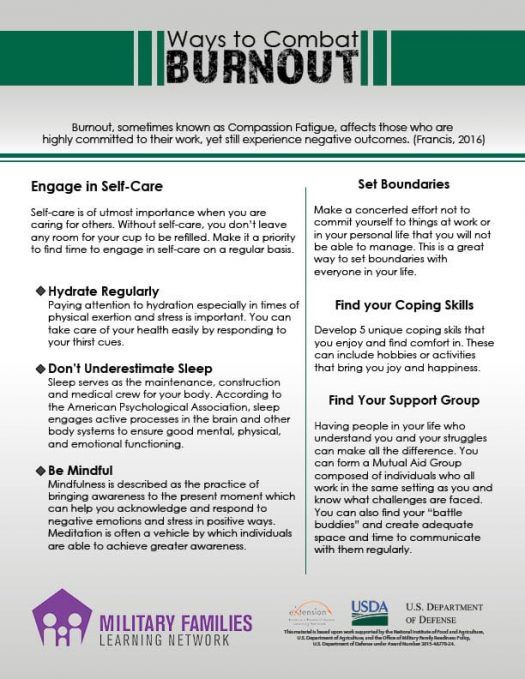By David Lee Sexton, Jr., Bari Sobelson, MS, LMFT, & Hannah Hyde, M.Ed.
The Helping Professions’ Kryptonite
Burnout, sometimes known as compassion fatigue, affects those who are highly committed to their work, yet still experience negative outcomes (Francis, 2016).
Individuals working in helping professions, such as counselors, social workers, or nurses, are especially susceptible to the effects of burnout due to the increased stress associated with such positions through near constant contact with clients or patients (Spicuzza and De Voe, 1982). However, Francis (2016) indicates that there are other factors that can increase employees’ risk of experiencing burnout, such as workplace incivility and ostracism. Spicuzza and De Voe (1982) emphasize that the experience of burnout is very personal; it may be triggered by varying events for different individuals and result in varying symptoms. However, it is generally characterized by the manifestation of gradually increasing levels of both physical and emotional exhaustion.
Beating Burnout
To combat the effects of burnout, Francis (2016) emphasizes the importance of engaging in self-care. Take breaks at work, eat and hydrate regularly, and set boundaries to ensure you do not agree to extra work you cannot manage (Francis, 2016). In addition, Francis suggests developing a total of five unique coping skills to help deal with daily stressors. These can include any hobbies or activities that an individual enjoys or finds comfort in, such as exercise, reading, gardening, mindfulness techniques, or simply getting a solid eight hours of sleep each night.
One interesting strategy proposed by Spicuzza and De Voe (1982) is engagement in mutual aid groups. Mutual aid groups have been described in various ways. Perhaps the most applicable description addressing how mutual aid groups can benefit those experiencing burnout in the helping profession comes from Kirschenbaum and Glaser (1978); they indicate that mutual aid groups provide stimulation of ideas, practical advice and assistance from similar individuals, and social support (as cited in Spicuzza and De Voe, 1982).
One of the most useful structures involves forming a group composed of individuals who all work in the same setting and know what challenges are faced by their peers (Spicuzza and De Voe, 1982). In addition, each member should understand the focus and goals of the group, in this case, burnout and its prevention/management. Finally, regular meetings are encouraged to ensure that support is offered frequently and continually.
In addition to engaging in self-care and seeking social support, Hendriksen (2016) insightfully suggests that individuals experiencing burnout attempt to find the root cause. She identifies the following six potential work problems that may be facilitating burnout: unreasonable workload, lack of autonomy, insufficient rewards or recognition, lack of fairness, lack of sense of community within an organization, and incongruence between work and one’s values.
When one knows what the cause of burnout is, one is more empowered to make changes to reverse the effects of burnout (Hendriksen, 2016).

Click the image to download and print the PDF Ways to Combat Burnout handout
References
Francis, D. C. (2016). In your corner: Combating burnout or compassion fatigue. Tar Heel Nurse, 78(5), 14.
Hendriksen, E. (2016, November). How to recover from job stress and burnout. Psychology Today, Retrieved from www.psychologytoday.com/
Spicuzza, F. J. & De Voe, M. W. (1982). Burnout in the helping professions: Mutual aid groups as self-help. Personnel and Guidance Journal, 61(2), 95-100.















